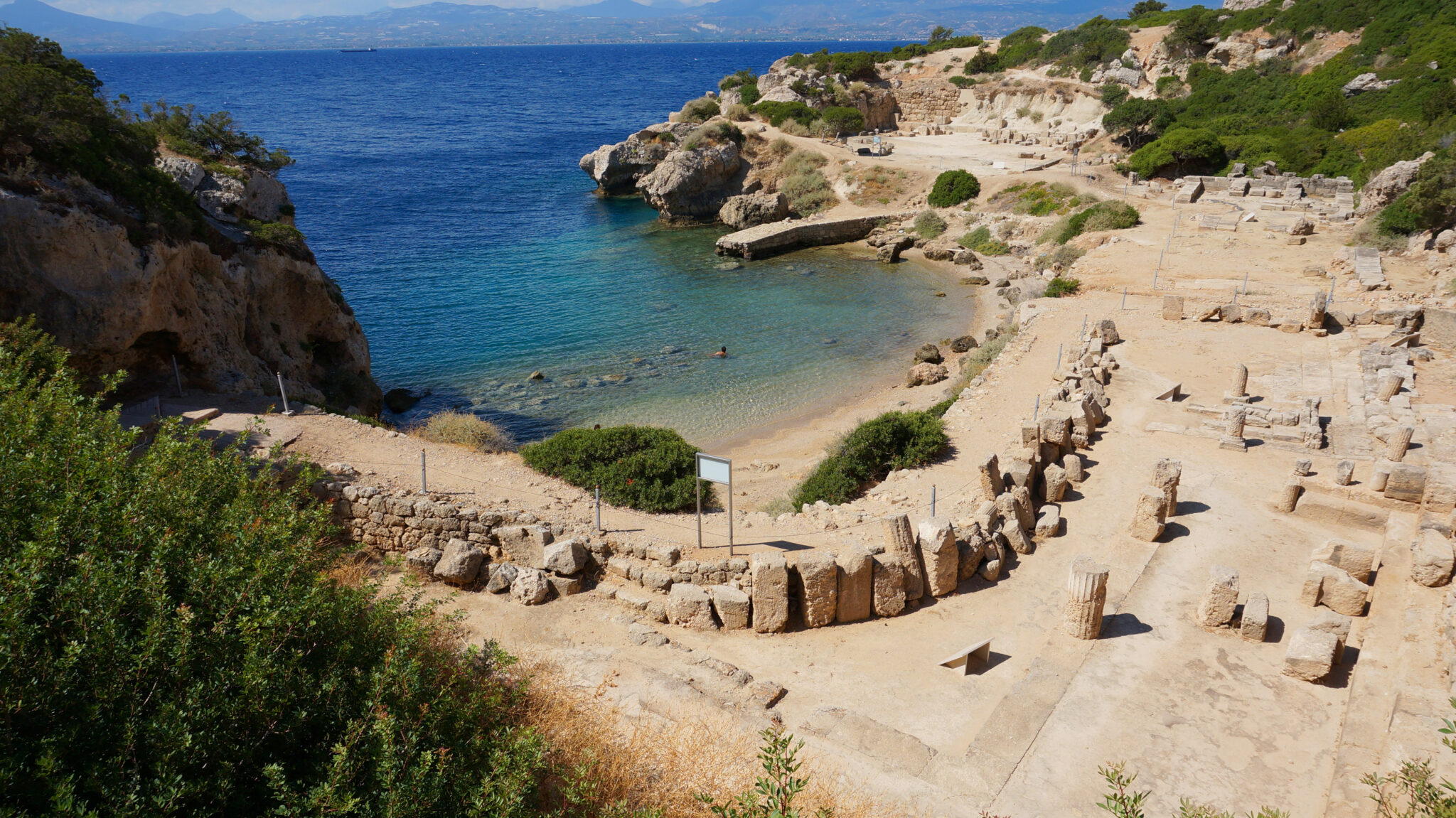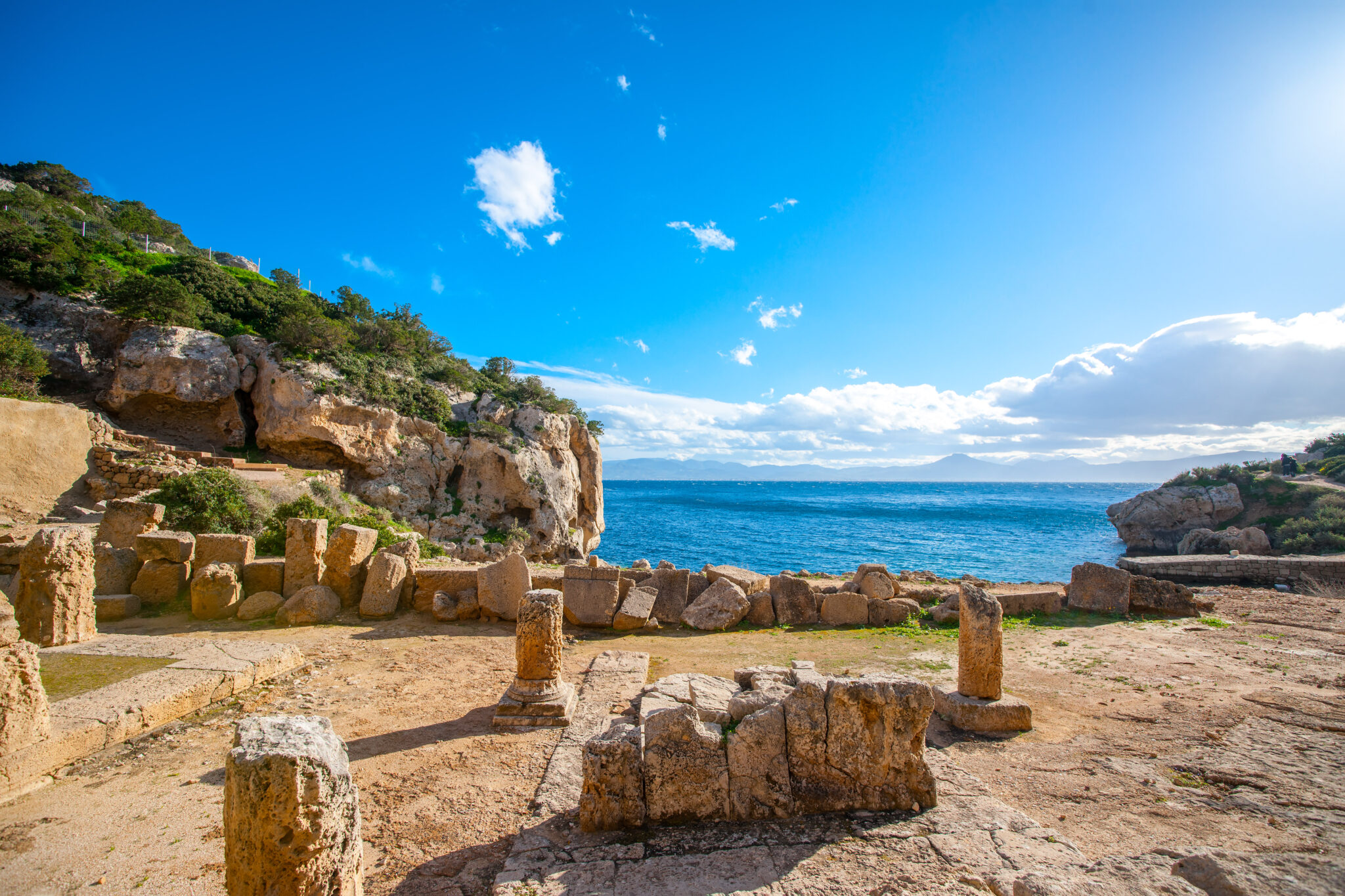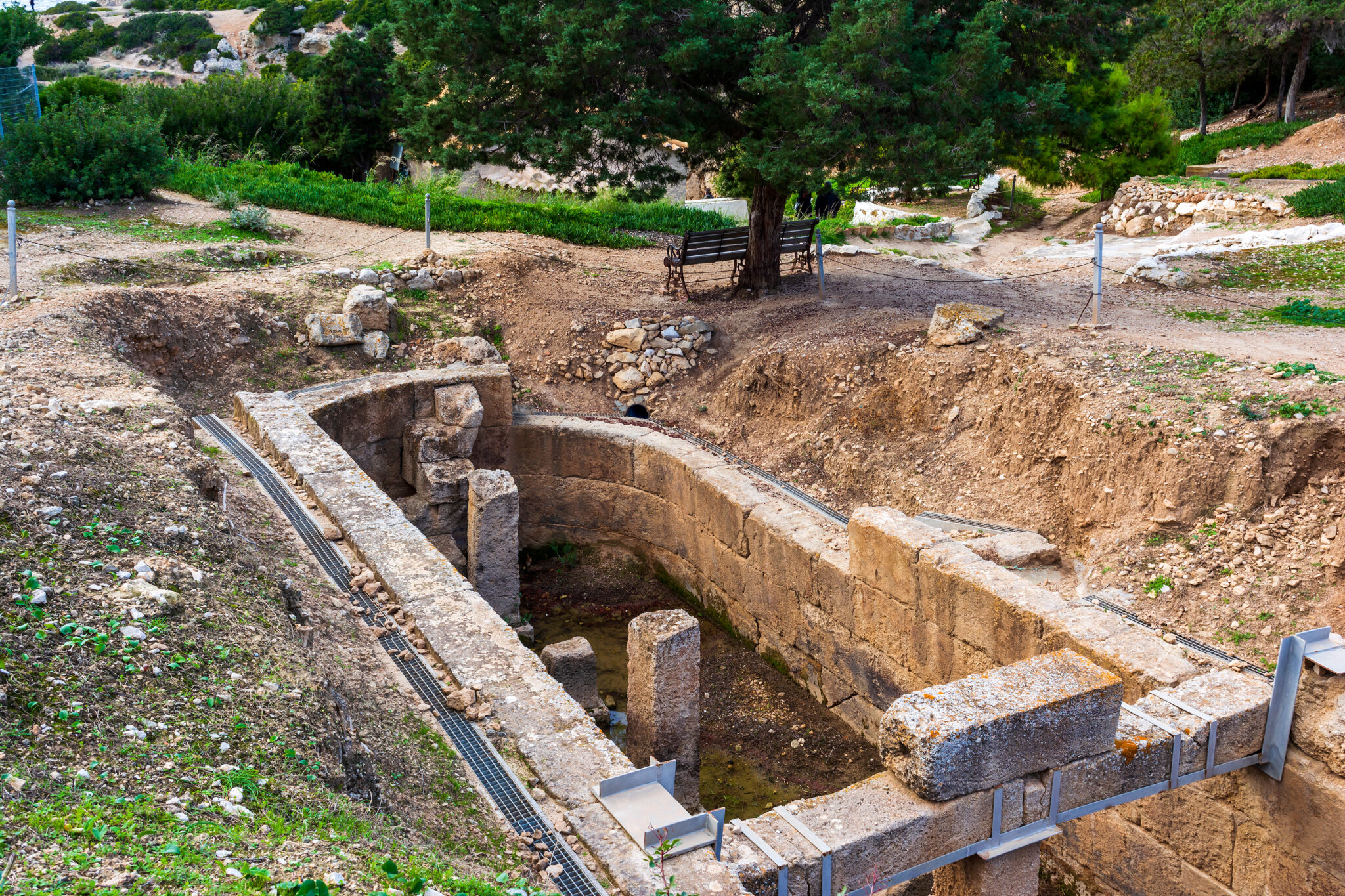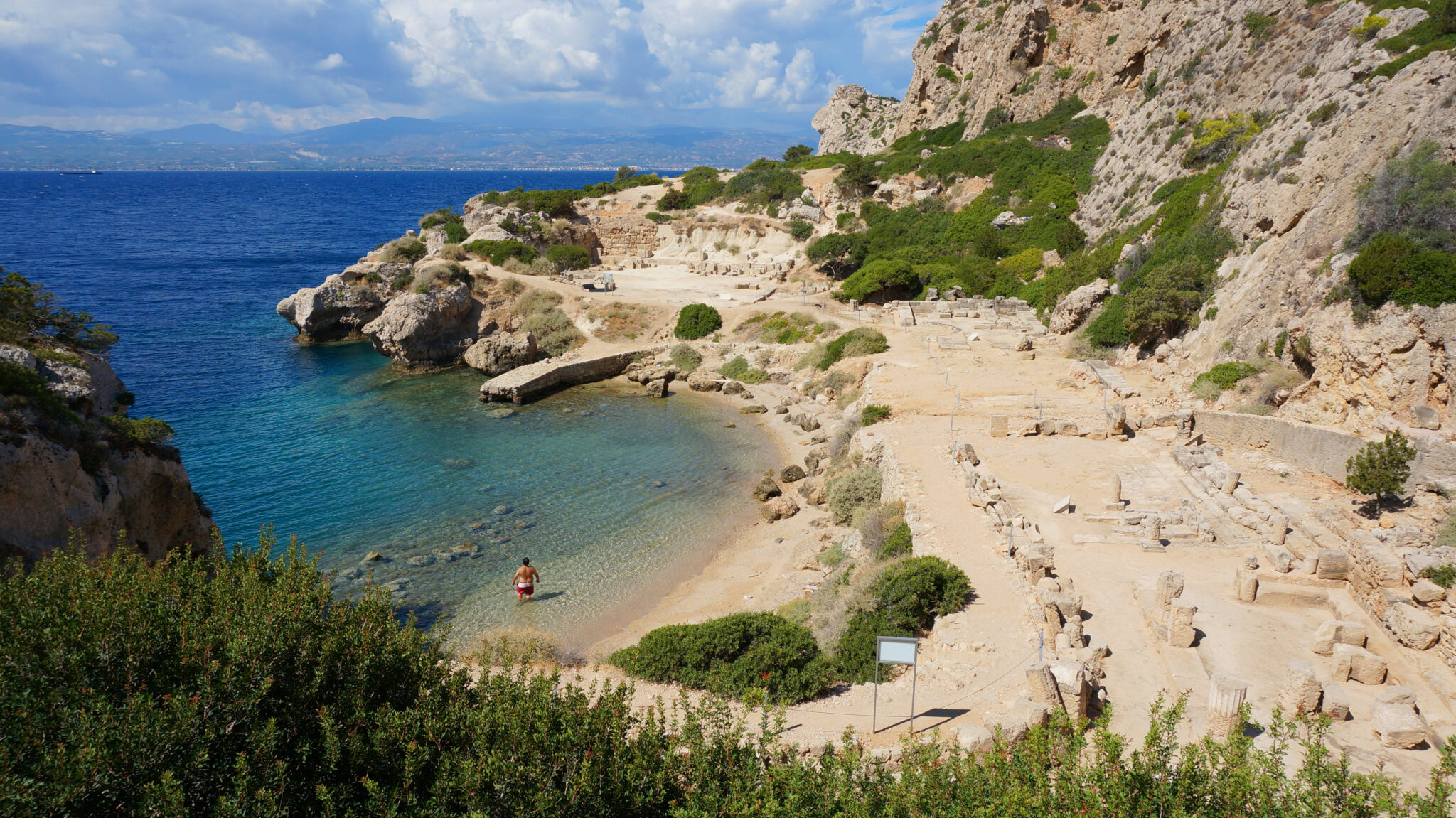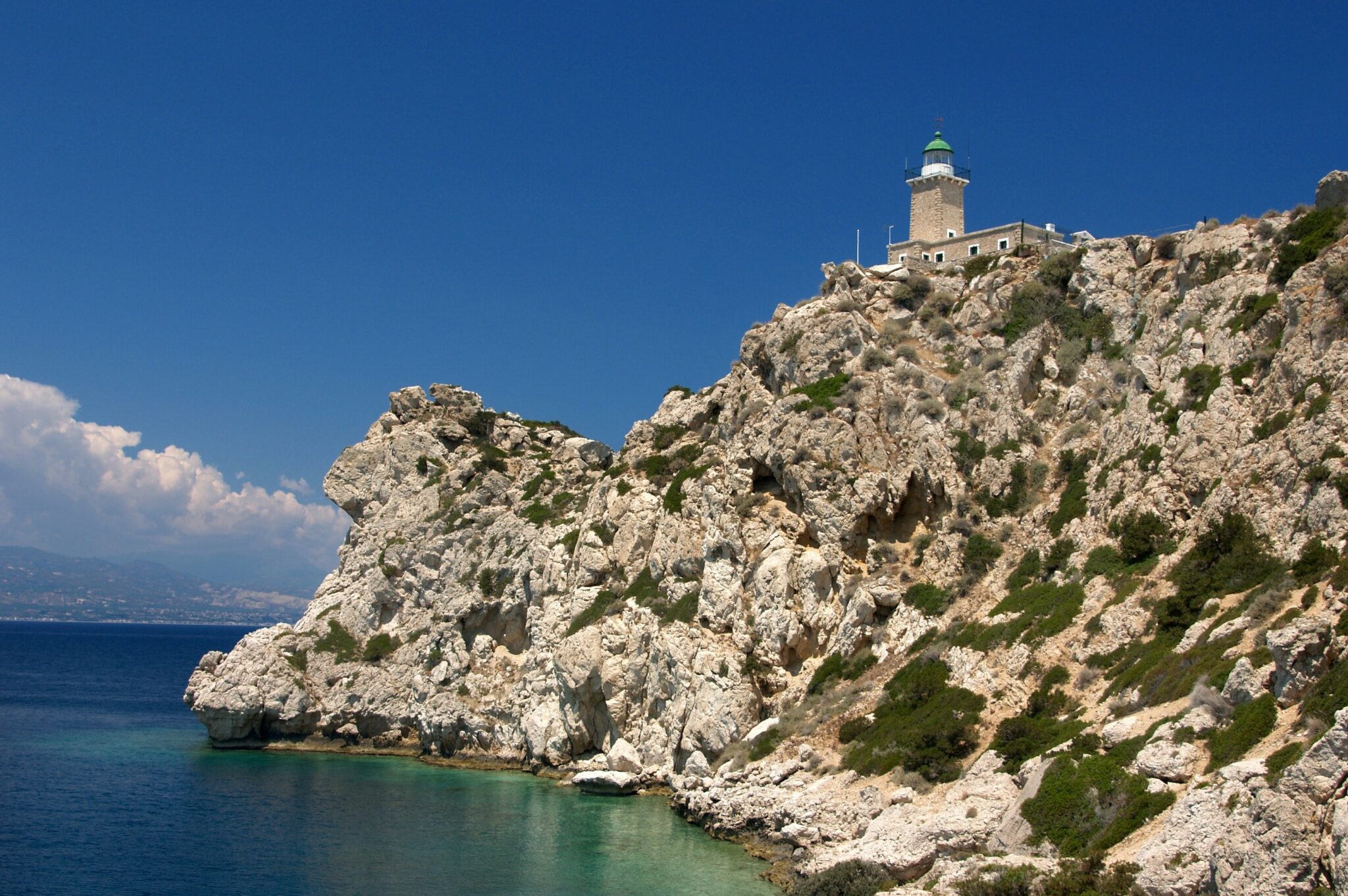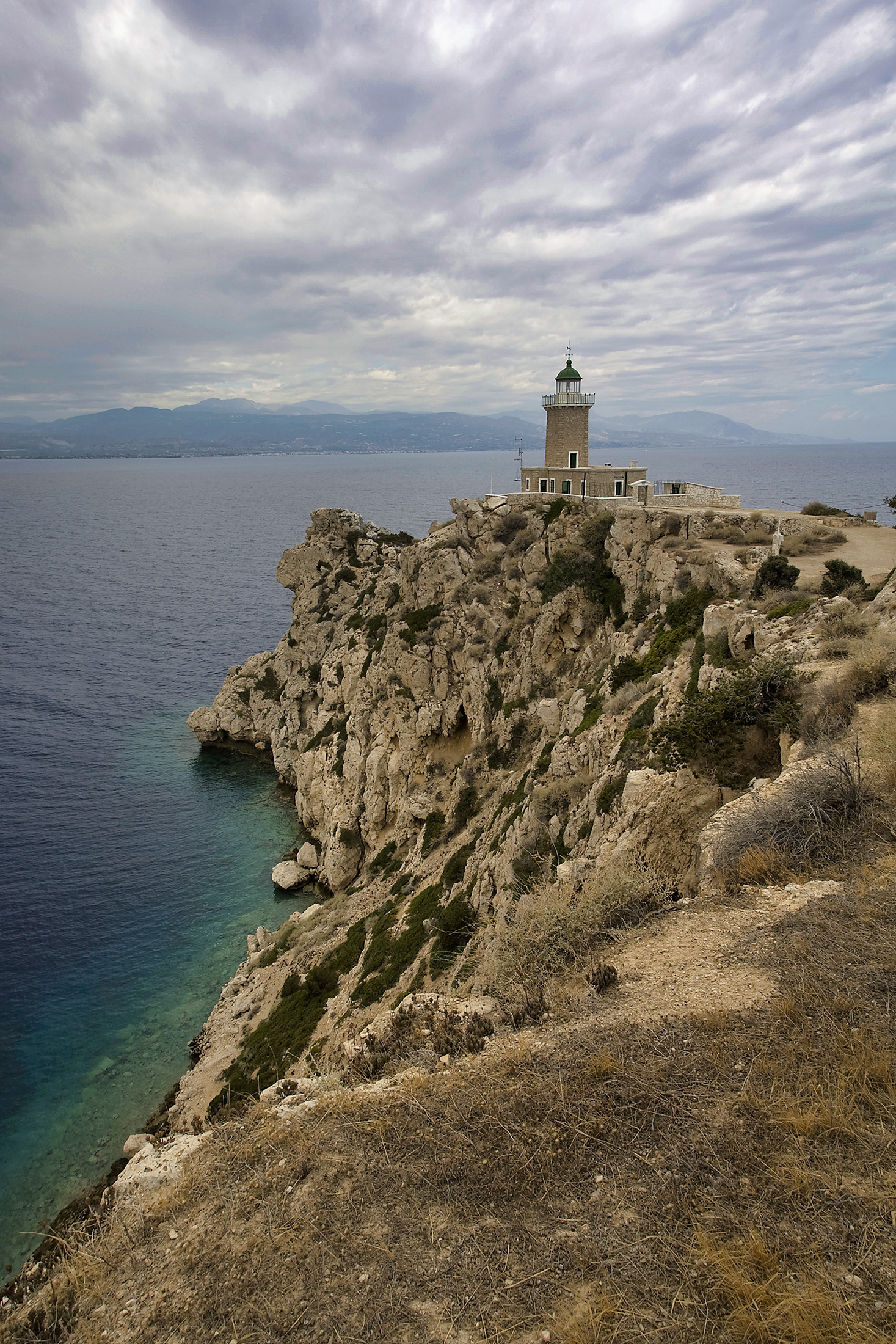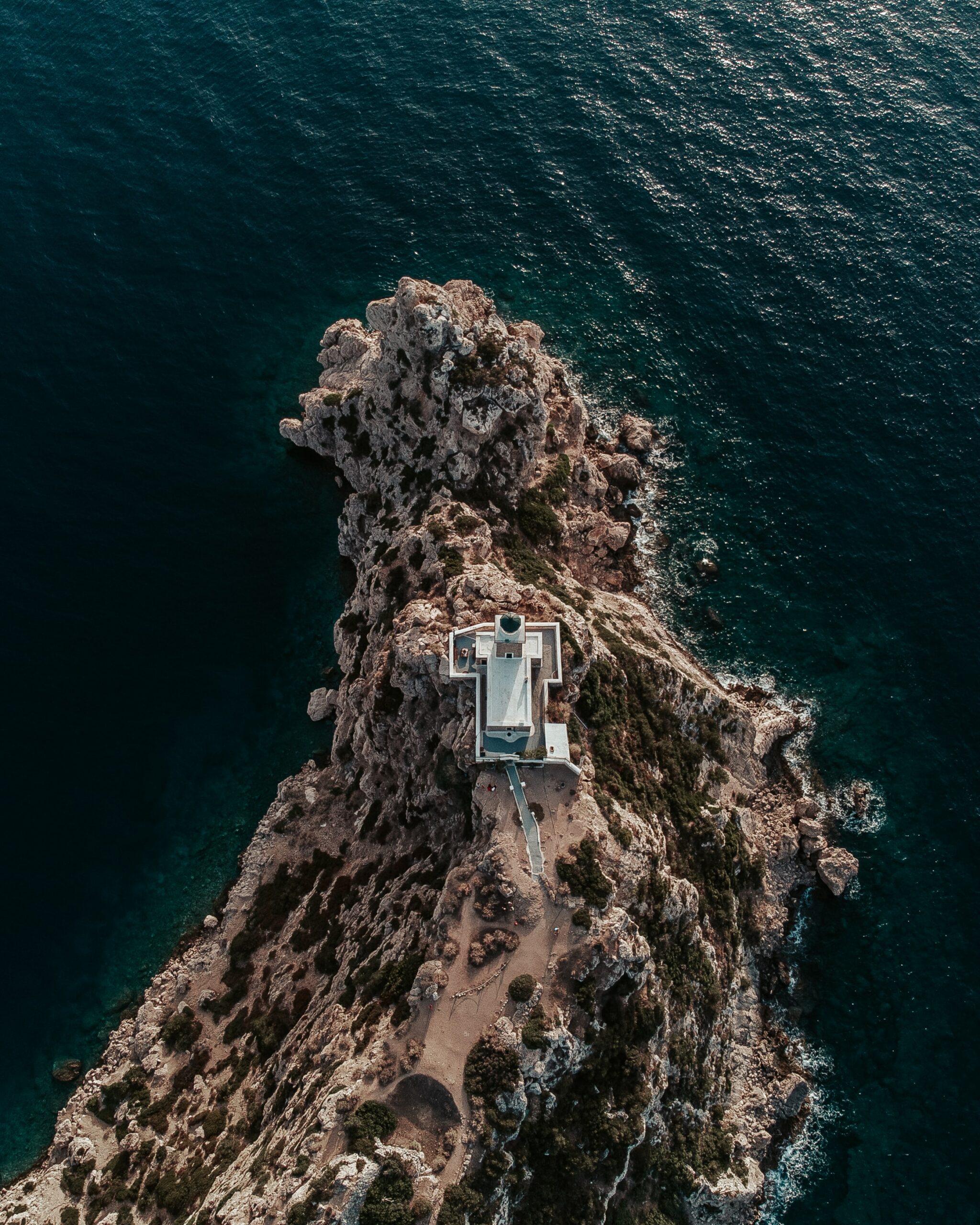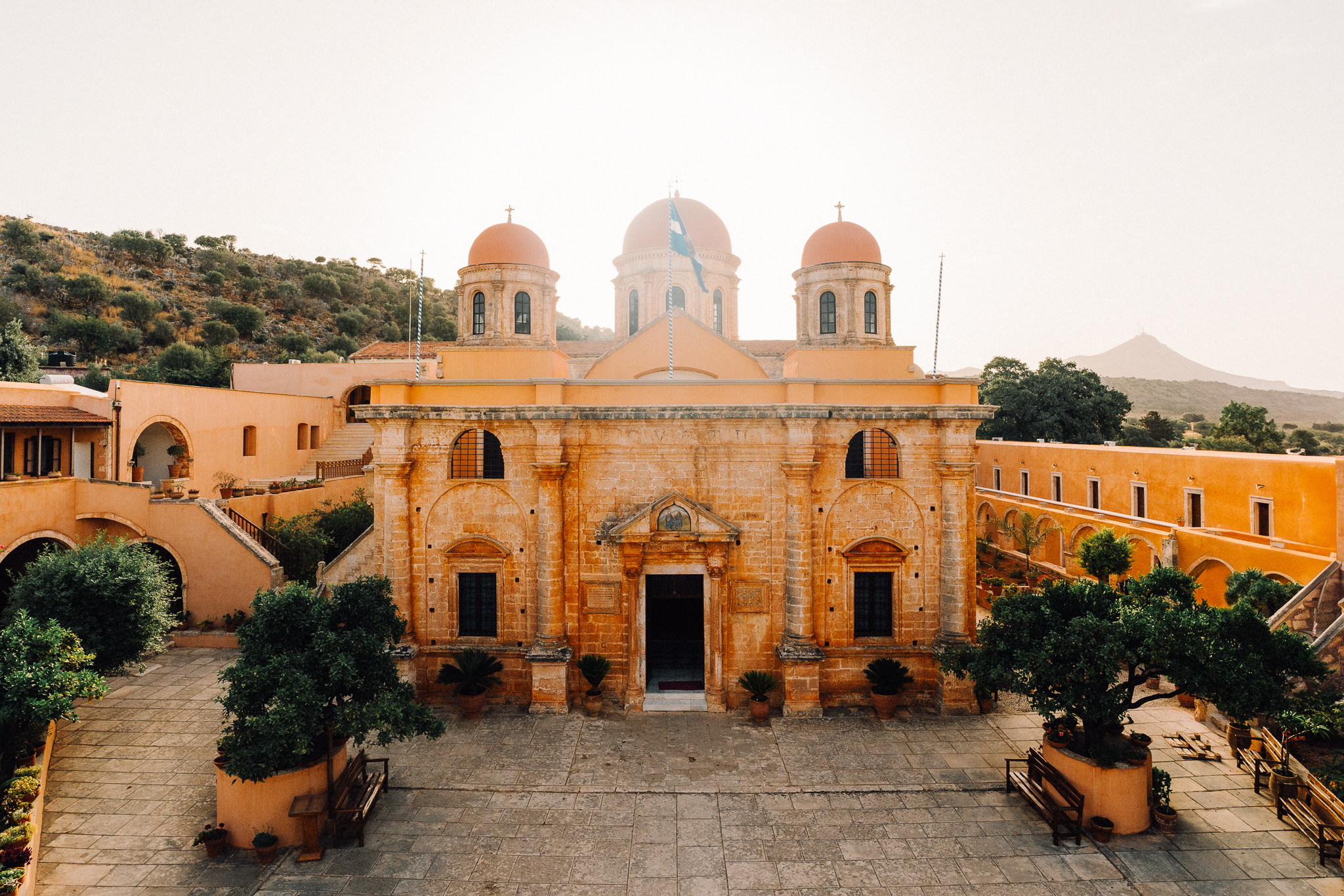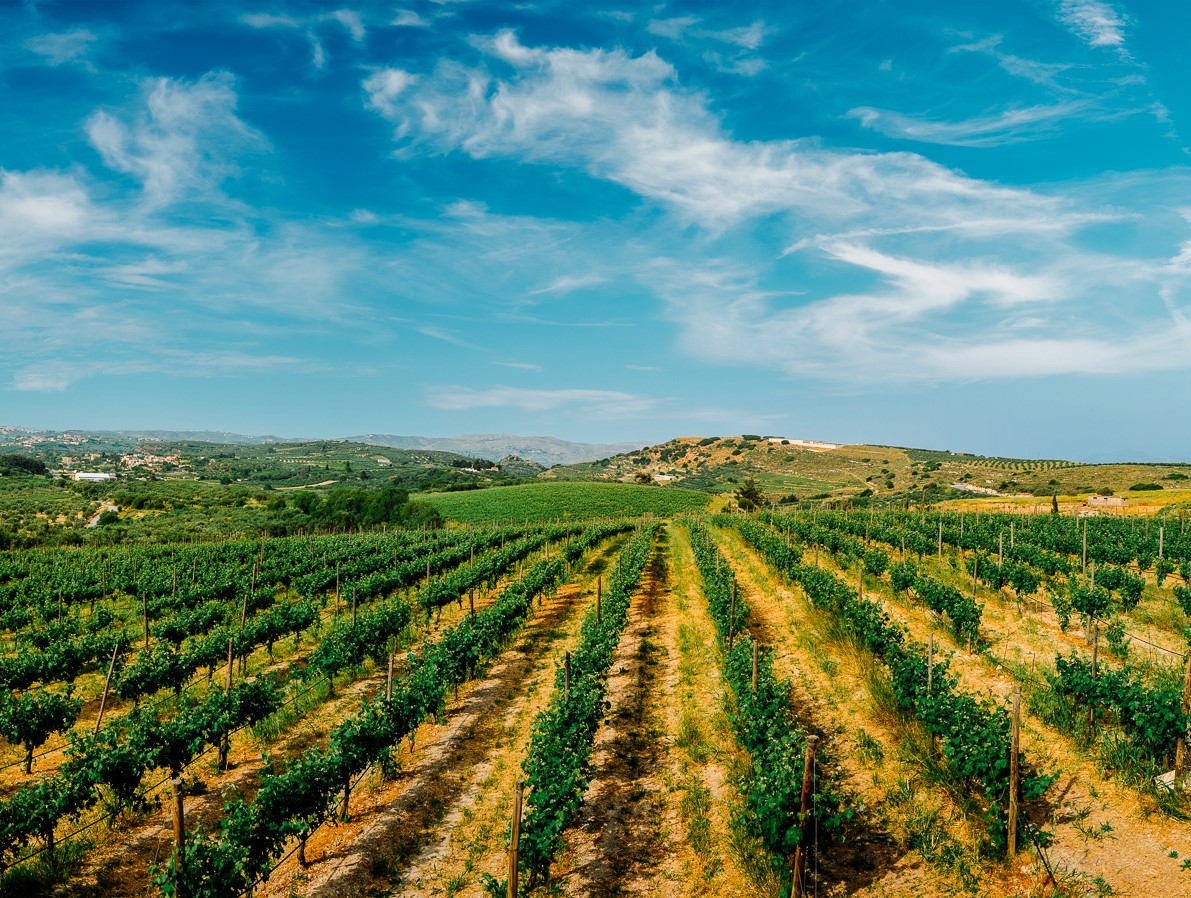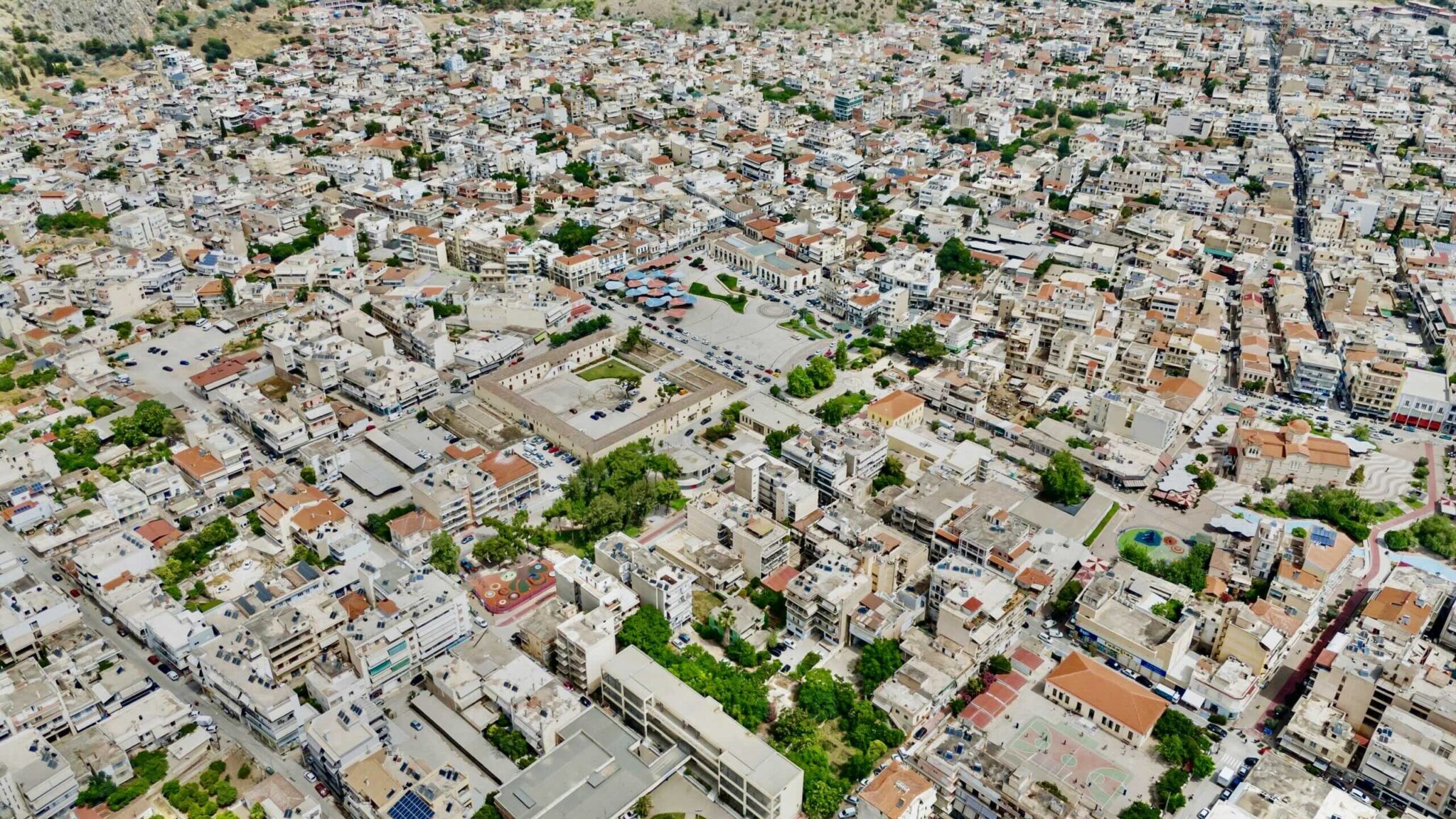In Perachora, quite near to the lake of Vouliagmeni, resides one of the most significant archaeological sites in Greece. The ruins of the Temple of Hera Akraia still stand, gazing out over the sea. Adjacent to it, on the Cape of Melagavi, a magnificent lighthouse soars, declared a historic monument to be preserved.
The road originating from the lake of Vouliagmeni halts here, at the westernmost tip of the Perachora peninsula, which the ancients christened Peiraion or Peiraia, situated beyond the region of Corinth. Overlooking the small tranquil bay from an elevation, one can perceive the ruins of the sanctuary of Hera Akraia. They have been engaged in a quiet dialogue with the wind and the sea’s saltiness for centuries, susurrating stories and tales of peoples of old and ancient deities.
Tradition narrates that Medea arrived here to bury her children, victims of her own vengeful wrath against her unfaithful husband, Jason. Historians tell how the seafaring Corinthians came to offer libations and prayers to the goddess Hera before setting sail westwards towards the Adriatic Sea, in search of new colonies.
Leading archaeologists, with Humphrey Payne at the helm, director of the British School of Archaeology at Athens, who conducted excavations between 1930 and 1933, corroborate that what one is witnessing was a splendid sanctuary thriving in the 6th century BC. Its radiance was such that it transcended regional boundaries: As evidenced by the dedicated offerings, worshipers made the pilgrimage here from all over Greece, from Argolis, Laconia, Rhodes, Chios, and of course nearby Attica.
The small harbour, a deep natural cove, is how many would come and go. The first temple was constructed during the Geometric period (900–700 BC) and was dedicated to Hera Akraia. Later, in the late 6th century BC, another temple was erected in a Doric order. The sacred enclosure housing the statue of the goddess was situated a few meters west of the Geometric temple, in whose place an altar was built for ceremonial sacrifices.
At the harbour’s edge, the monumental ruins of the two-storey Stoa building exude a unique allure and significance. The ground floor’s Doric column arrangement and the upper floor’s Ionic style present a harmonious fusion, making this building a remarkable early exemplar of Greek architecture. It was likely utilised as a place for visitors to rest and a place to store sacred relics.
During the 4th century BC, the sanctuary’s zenith, building activity increased, as can be seen by the refurbishments in the ancient village situated to the north-east. These intriguing remnants of the past can be explored at the archaeological site’s upper side, a little farther from the small harbour. Noteworthy features include the vaulted cistern, located near the church of Ag. Yianni (Saint John), supported by eleven sturdy columns, the dining hall, where dignitaries ate their official meals. Moreover, the building of the Hearth, initially mislabelled as the sanctuary of Hera Limenia, and the Sacred Cistern, where artefacts related to purification rituals were discovered, add to the site’s mystery and wealth. The site’s intricate irrigation system is considered remarkably innovative for its era.
The devotional space dedicated to Hera Akraia seemingly experienced an abrupt cessation of activity in the 2nd century BC. Theories suggest that it was looted by Roman legions following the Battle of Leucopetra in 146 BC, echoing the devastation of Corinth at the same time. The area might have seen renewed inhabitation during the Roman rule (31 BC-324 AD), yet over time, it fell into abandonment.
In 1991, the wider expanse of the Heraion of Perachora was officially recognised as an archaeological site. Some restoration and preservation works have taken place, and signs have been placed throughout, to guide visitors.
On the western fringe of the peninsula, past the acropolis, the Melagavi cape is tipped with an impressive stone lighthouse crowned with a square tower. Renowned as one of Greece’s most beautiful, it has been designated a historic monument and a listed building since 2001. Built in 1897, it initially operated on oil, guiding vessels in the gulf of Corinth towards the Corinth Canal. World War II saw the lighthouse cease operation, but it was later reactivated in 1947. Its conversion to electric operation occurred in 1982. A climb to this beacon, particularly towards the end of the day, affords a spectacular vista of the setting sun, and attracts many onlookers.
Read also:
Lake Vouliagmeni: A Stunning Body of Water Close to Athens
A breath away from Athens: 3 quick getaways near the Greek capital



